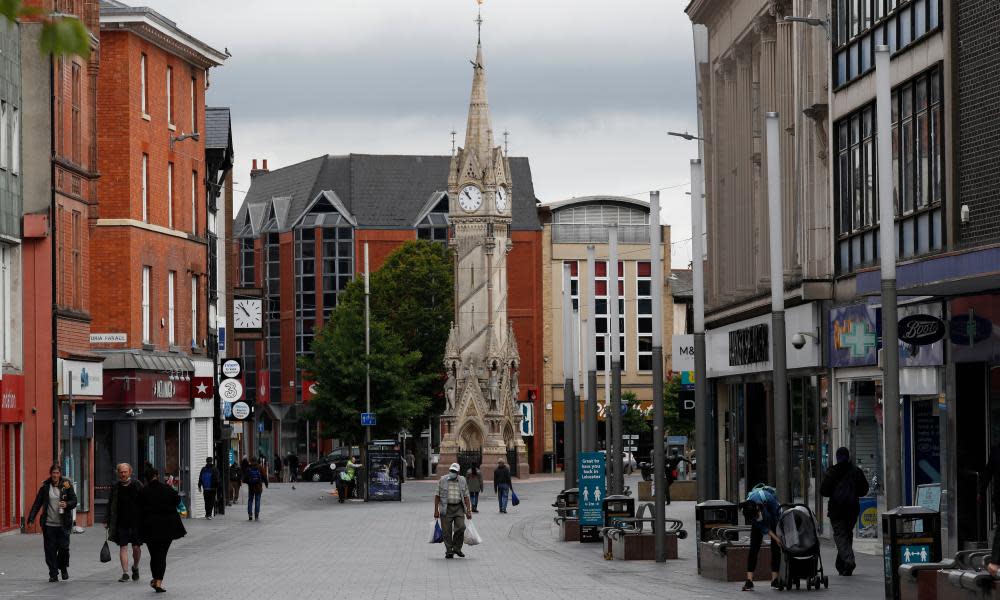Leicester infection rise driven by under-19s and workers, says PHE

A rapid investigation into the Covid-19 outbreak in Leicester by Public Health England has revealed it has been driven by increased infections in the under-19s and people of working age, while the average age of those infected is around 40.
The proportion of infections among under-19s had fallen to around 5% in mid-May after the initial epidemic peak, the report published on Wednesday revealed. But it has since risen to 15% and the proportion of positive tests in working age people has also risen to the same amount.
The finding has prompted calls from the epidemiologists who carried out the study for further research to explore whether the return of children to school is connected to the growth in infections, although there is as yet no analytical link. The trends have not been observed in other parts of the east Midlands or related travel areas.
Related: Data that could stop new Covid-19 waves in England being withheld, say councils
The infection rate recorded in the community from so-called pillar-2 testing – swab tests conducted outside NHS hospitals and Public Health England labs – was more than four times higher than the average for England. Of the 3,216 cases in the city, almost a third, 944, came in the past 14 days, the study said.
It showed how outbreaks took hold in the North Evington and Belgrave areas of the city, with the two wards accounting for over a quarter of the infections between 11 June and 25 June. Cases were linked to food factories, food outlets, shops and supermarkets.
Related: Some Leicester factories stayed open and forced staff to come in, report warns
There were also infections at one of the sites of University Hospitals of Leicester NHS trust. On one ward, five patients who were screened as coronavirus-negative on admission were subsequently detected as coronavirus-positive but were likely to be incubating the virus when they were admitted. All other patients and staff were screened and a dozen staff were found to be infected but were asymptomatic.
default
The ethnicity of the people infected broadly reflected the makeup of the population, which is about 50% from black, Asian and minority ethnic backgrounds. The increase in infections was attributed, in part at least, to an increase in testing. There was a linear growth in infections rather than an exponential acceleration that would be characteristic of the unrestrained spread of the virus, PHE said.
The report showed that, of the areas of England where infections exceeded the expectations of the PHE epidemiologists between 13 and 22 June, Leicester was top.
The scientists expected 582 infections but 711 were recorded. The Yorkshire locations of Bradford, Sheffield, Leeds, Barnsley and Kirklees also surprised the researchers with outbreaks considerably more serious than anticipated.
The highly localised nature of the outbreak was revealed by contrasting it with the fortunes of nearby towns and cities. From the start of June to 22 June, the infection rate in Leicester was almost 10 times higher than its nearest neighbouring city of Nottingham and 20 times higher than Coventry.

 Yahoo News
Yahoo News 
